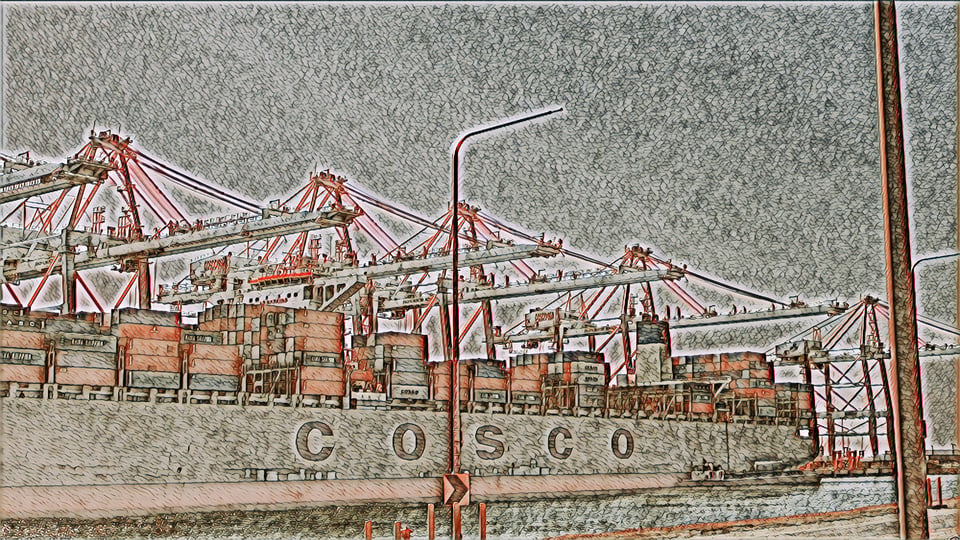Weekly API Evangelist Governance (Guidance)
Business alignment is everything. When I say business alignment, I mean alignment between leadership and employees within a company, alignment between technical and non-technical groups within a company, alignment with partners, alignment with a market, alignment with customers, and alignment within the sovereign domain in which a company operates. When I hear the phrase "business alignment" in the realm of APIs, it often refers to the divide between product and engineering functions. I left Postman to better understand what this meant—ultimately revealing that all of these things are related and leaving me wanting to better understand business alignment from the top-down, bottom-up, inside-out, and outside-in.

Strategies
To achieve business alignment, you need a strategy. Common sense, right? I'd say most companies I've worked with have a strategy. I'd also say most companies I work with do not stick to, measure, and evolve their strategy with any actual roots in their operations, across domains, and among all the stakeholders involved. Most of the strategies I see are docs, decks, and diagrams that are loosely agreed to among leadership and then broadcast to everyone else. I prefer to ground strategy in schema that represent all of the vocabulary I use in this narrative.

Domains
To achieve business alignment, you need well-defined domains occupied by domain experts. What we tend to have within most of the companies I have worked with is lines of business or tribes—not well-defined domains. Domains are simply a specified sphere of activity or knowledge, often defined by a title, description, and a set of tags. Domains often have many stakeholders involved who employ a shared vocabulary and work to standardize as much activity as they can. Domains provide common ground. Domains define what is known.

Vocabularies
To achieve business alignment, you need a common vocabulary. The glossary for your vocabulary is the first thing you will need to work toward business alignment. You need to have agreed-upon meanings for the words that you use. You should use them as consistently as possible and do the work to reduce ambiguity surrounding the words we use whenever possible. Ensure that your vocabulary is common across the domains in which you are operating and is as familiar to all stakeholders involved as possible to align evenly across business operations.

Schemas
To achieve business alignment, everything listed in this story must also have a formal schema. Every word you use should live in the glossary for your domain vocabulary and possess a schema that provides the shape of properties—something that can be used to validate programmatically by any stakeholder across business operations. Schemas are how we get on the same page with very complex concepts. Having a schema for each word used in this narrative provides a foundation for aligning across business operations.

Tags
Tags provide a robust tactical tool that can be used across schemas to perpetually achieve business alignment across domains. Tags define your shifting boundaries. Tags bring order to any schema employed as part of business alignment. Tags exist across schemas to allow for searching, grouping, and aligning as meaning across operations is being defined or refined. Tags are the millions of little screws and nuts that will need to be tightened or loosened across business operations to keep things aligned over time across a very complex set of systems.

Services
A variety of internal, first-party, and third-party services are required to perpetually achieve business alignment. Alignment across these three distinct areas of services is required to keep a company aligned with what is happening with partners and across markets. Being able to see the services you use is step one in alignment; without it, you will always be out of alignment. Being able to effectively automate and orchestrate across these services is step two. Step three is about being able to add new services and effectively deprecate services over time.

Tools
A variety of open-source tools are required to perpetually achieve business alignment. Open-source tools align business from a cost perspective, but there is also an alignment with the market that often goes unseen. Using common programming languages, frameworks, packages, and containers helps align operations across a business in a cost-effective way, but it also brings alignment across external market ecosystems, bringing alignment with partners and other stakeholders who are involved in aligning business operations each day across each domain.

Standards
A variety of internal, domain, industry, market, government, and internet standards are required to perpetually achieve business alignment. This is why schema plays such an important role in business alignment, as it provides the standardized bits that begin with single words but then expand into more robust and complex schemas to help standardize what we all mean when we are working to align business operations. Not everything can or should be standardized, but over time, much of what we do should be standardized to align our business across each of these levels.

Platforms
Business alignment requires a solid platform to occur. Standardization of business operations accumulates as a platform. Standards are what define the strength of a platform. Standards are what organize services and tools into a platform that can be used across multiple domains that possess a common vocabulary. A platform needs to be defined to be standardized and refined. This is why Backstage and other internal developer platforms have emerged, allowing for platforms to be shaped, defined, and evolved using a GitOps approach to accumulate over time.

Plans
It will require hundreds or thousands of individual plans to perpetually achieve business alignment. Each service or tool in use as part of business operations has a plan in place, whether or not you are in control of that plan is the question. Your relationships with GitHub, Atlassian, Claude, and AWS all have plans in place. Do each of your internal or first-party services you provide have a plan in place? Plans reflect the hundreds or thousands of places we can go to adjust business alignment when it comes to cost, risk, and velocity—taking you wherever you need to go.

Stakeholders
You will need to have all the stakeholders involved across each of the areas expressed in this narrative to achieve ongoing business alignment. All stakeholders involved in operations within a domain should be defined and part of any planning, changes, communication, and resulting experience. Business alignment requires people alignment. If the application of your digital resources does not have clear boundaries with known stakeholders, then business alignment will become much more difficult, with stakeholders perpetually being out of alignment across operations.

Contracts
Each system, cloud, and application integration will require a contract to help repeatedly deliver on business alignment. Contracts are agreed-upon schemas for services that are standardized around a common vocabulary and plan for integrating our systems. These contracts must be well-defined using a common language that is able to be understood and validated by any stakeholder involved with aligning any aspect of business operations. Contracts align people inside and outside of a company and ensure we move forward with the same understanding over time.

Policies
Having a common but ever-evolving set of policies that provide the guiding principles for business alignment is essential to doing this at scale. There will be thousands of little details, decisions, and contexts that go into aligning business over time that will need to be agreed upon across stakeholders. Policies provide the business language required to articulate alignment with business stakeholders, but done so in a way that will connect common business policy for any given domain with the actual rules that are used to automate policy enforcement at scale.

Rules
Thousands of rules expressed as artifacts or code which are driven by policy are how business will be aligned in real time via services, tooling, and pipelines. Rules govern the thousands of technical details needed to shape the cost, risk, and velocity of our businesses. Rules are applied to different aspects of our operations from design to authentication but require ongoing policy alignment with strategy and the overall experience of stakeholders involved with business operations, helping confidently and safely automate and orchestrate with proper business alignment.

Pipelines
It will require hundreds or thousands of CI/CD pipelines to perpetually achieve business alignment over time. Pipelines are where all the schemas outlined in this narrative are validated and governed. Pipelines are where contracts are validated or invalidated. Pipelines are where we standardize the technical, but also the business details of our integrations. Pipelines are the backbone of our automation and orchestration. Pipelines are the supply chain, factory floor, and distribution of our digital products that ultimately define if our business is aligned or not.

Changes
Business alignment is defined by change. Change must be quantified and communicated over time to align people and systems as things change. Semantic versioning for all of our schemas and interfaces signals and communicates change so that those who care can follow along. Business alignment requires a consistent plan for how changes will occur and be communicated as part of regular operations—not requiring additional work. The amount of control that any company ultimately possesses over change will be defined by the amount of business alignment that exists.

Maturity
Where you are in your overall digital transformation journey and the maturity of your approach to doing business will ultimately shape business alignment. Each of the areas of this narrative can be defined by schema and then validated and governed against the policies being applied to shape experience and strategy. The compliance with policy, but also the scope and coverage of policy across a domain, will translate into overall maturity. The maturity of engineering operations will ultimately shape the business alignment that is possible in any given moment of time.

Communication
Business alignment is shaped by the amount of communication that exists across all of the areas covered in this narrative. It is possible to communicate too little or too much, leaving the right-sizing of communication for a domain and its stakeholders key to answering what business alignment means. Communication can mean documentation and notifications, or possibly meetings and reviews. Communication will mean different things to different companies but is something that can and should be defined, standardized, and governed to ensure business alignment.

Experiences
Business alignment will be defined through common human experiences. Business alignment is executed via many technical concepts outlined as part of this narrative, but it will be perpetually shaped and defined by experiences that matter to average people. These experiences might be meaningful to technical or non-technical people but should be communicated in plain language and describe the pain and gain that your average person on both sides of the business alignment equation feels on a daily basis—translating the technical details into the experiences that align business.

Alignment
There are a lot of layers of our business operations that can translate into business alignment. You won't know what they are until you define them. There are too many of them to define simply via docs, decks, and diagrams—you need schema, with pipelines to enforce via rules and policies that are aligned with the experiences that stakeholders care about. There are many strategic as well as tactical remedies for business alignment present in this narrative, both of which you can execute over time to eventually begin heading in the same collective direction.
You need docs, decks, and diagrams to explain this, but if it isn't rooted in a common vocabulary, schema, and standards expressed in contracts that are validated and governed by policies and rules via our pipelines—your business alignment will vary based upon which direction the market winds are blowing. Business alignment means that you can raise or lower your sails consistently across all of the ships in your fleet, no matter how big or small and centralized or federated your business operations are, to deal with whatever winds the markets send your way.